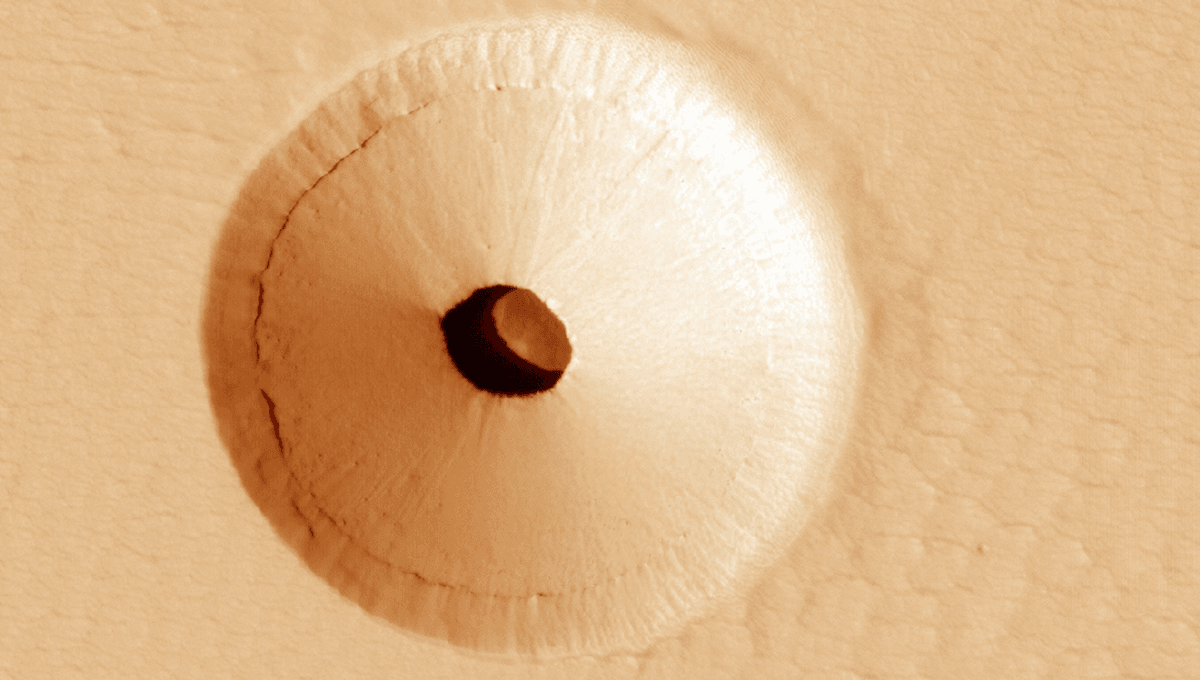
While snapping photos of the surface of Mars in 2011, the HiRISE instrument aboard the robotic Mars Reconnaissance Orbiter spotted a very unusual feature.
On Pavonis Mons – a large shield volcano in the Tharsis region of volcanic mountains – the camera saw a giant hole, appearing to lead into a large underground cavern. Further analysis showed that the hole’s opening is around 35 meters (115 feet) in diameter, with the cavern beneath around 20 meters (66 feet) deep. Prior to the likely collapse and infilling, it was likely around 90 meters (295 feet) deep.
What caused the hole is a bit of a geological mystery. Caverns of this size or higher on Earth, of which there are few, are generally caused by water dissolving through limestone.
“Sinkholes are most common in what geologists call, ‘karst terrain’,” the US Geological Survey explains. “These are regions where the types of rock below the land surface can naturally be dissolved by groundwater circulating through them. Soluble rocks include salt beds and domes, gypsum, limestone and other carbonate rock.”
With the rock underneath dissolved away, underground caverns are left underneath the surface. When the weakened surface collapses into the cavern, it creates a sinkhole.
But Mars – puzzlingly – has no sign of carbonate rocks such as limestone, and very little water. A more likely explanation is that the hole leads into a lava tube.
“Sometimes the tops of lava flows freeze on the surface even while the lava continues to move underground in a lava tube. If these tubes drain, then lava tube caves can be left behind. Sections of the roof may later collapse, creating roof openings, and these openings can be imaged from orbit,” Shane Byrne, a Professor at the Lunar and Planetary Laboratory at the University of Arizona, explained in a blog post.
“Could this be a view into a lava tube? If so, it would dwarf all lava tubes on the Earth! It’s also possible that this collapse is above some more substantial part of the volcano’s internal plumbing system and collapses deep with the mountain are allowing voids to open up near the surface.”
The hole has interest beyond being cool space geology. It’s possible that as conditions on the surface of the planet changed, and it lost its protective magnetic field and atmosphere, any life may have shifted underground.
“Holes such as this are of particular interest because their interior caves are relatively protected from the harsh surface of Mars, making them relatively good candidates to contain Martian life,” NASA wrote of the cavern in 2020. “These pits are therefore prime targets for possible future spacecraft, robots, and even human interplanetary explorers.”
[H/T: Universe Today]
Source Link: Mystery Of What Caused This Giant Hole On Mars – And What Lies Inside?